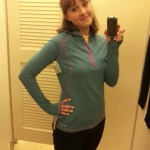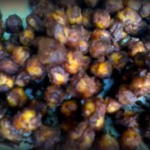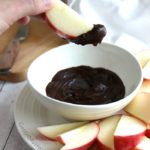Is it just me or are there constantly new studies coming out about how chocolate is good for us? I feel like I’ve been hearing about it quite frequently lately. Don’t get me wrong—it’s a great discovery. I just find it funny how the media seems to be trying to make us feel better about our indulgences.
After hearing again about dark chocolate being a health food, I started thinking about all the other studies that have been coming out, telling us our food choices may not actually be as horrible as we may think. From beer to chocolate to a dessert breakfast, I have come to the conclusion that I must be the healthiest person alive.
Here are some food and drink studies that I found comforting informative:
Wine
Wine is known to have many health benefits from its antioxidants when drank in moderation. This means one glass a day for women and two for men. Above that amount, the health risks tend to outweigh the health benefits.
The details: Wine, in general, provides anti-aging effects, increased good cholesterol levels, a reduced risk of heart disease, and more. There are numerous studies arguing how red or white is better than the other, but it’s understood that both have benefits.
Red wine has more of the antioxidant resveratrol, which may indicate increased health benefits, but white wine has smaller antioxidant molecules, which indicates better effectiveness through easy absorption. White wine has also shown to help keep lungs healthy, while red wine is especially praised for its heart-healthy benefits.
Despite the study being looked at, it’s understood that drinking moderate amounts of red or white wine can provide health benefits. Which one is better is still up in the air, though red is usually praised more. A.k.a. if you enjoy wine, any color, there are some positive side effects.
Beer
Beer has its benefits, but I’m not talking Beerfest levels here. They recommend only one 12-ounce beer for women and 2 for men to tap into the benefits.
The details: Beer has a variety of potential benefits, including high silicon levels, which is associated with better bone health. It also can reduce the risk of heart disease, stroke and developing dementia. Along with other alcoholic drinks, beer also promotes healthier kidney function and helps raise good cholesterol. Another pro is it boosts vitamin levels, such as B12, B6, and folic acid.
HOWEVER, since beer tends to have a decent amount of calories (around 150 for a regular beer), don’t overdo it. I wouldn’t necessarily say beer is a healthy drink, but if you happen to be a beer drinker, you can rest easy at night, knowing it has a few perks (and it tends to make you sleepy).
Coffee
Coffee is a naturally calorie-free beverage. Unless you fill your coffee with cream and sugar, it happens to be a pretty healthy routine. Like any food or drink though, make sure not to over-indulge, especially if it’s caffeinated.
The details: Caffeinated coffee wakes up your brain and nervous system. Coffee in general can help lower your risk of diabetes, Parkinson’s disease, Alzheimer’s, and heart attacks, but in most studies it has been the caffeinated variety that seems to lower the risk of type 2 diabetes. Decaf also seems to have a lot of the same benefits, due to antioxidants, minerals, and other compounds though.
Dark Chocolate
Eating dark chocolate that’s at least 70% cocoa will give you more of the antioxidants that offer health benefits. The more processed the chocolate, the less antioxidants there are. Milk chocolate has a very low amount of the flavonoids while white chocolate has no health benefits.
The details: The flavonoids in dark chocolate can help lower blood pressure and cholesterol, help prevent diabetes (through improvement of insulin sensitivity), increase blood flow, improve cognitive function, and even improve a workout! According to fitsugar.com, a study concluded that consuming a small amount of the antioxidants from dark chocolate before a workout can help reduce fatigue.
HOWEVER, since chocolate tends to have a lot of fat and sugar, you should only eat small portions of it.
Eat Cake with Breakfast
According to a recent study, people who ate something sweet with a large breakfast lost weight and were able to keep more of it off than those who at a small breakfast.
The details: Eating a carb- and protein-rich breakfast keeps you feeling full throughout the day. Researchers think that adding something sweet to breakfast helps satisfy your sweet tooth, preventing later binging. This study is a bit controversial as some think eating sweets for breakfast will cause a more intense sweet tooth throughout the day.
I side with the controversy. If I ate cake for breakfast, I’d be thinking about dessert all day. However, if you do decide to opt for the sweet start to the day, make sure you’re eating more than just sugar—a.k.a. protein and carbs as well. For a healthier sweet option, eat some fruit!
If you read through the research, it all seems pretty legit. For some reason though, it still feels to me like they’re just trying to find any hints of healthiness in what we already eat or drink. Overall, what we should take away from all of the research is that moderation is key. Drinking too much alcohol or eating too many sweets can lead to an increased risk of health problems.
While there are plenty of benefits to the above food and drink choices, it can be easy to overdo it. It’s not the end of the world if you have more than the recommended amount. Just be aware there are risks that come with it when you do it all the time.
When I know I’ll be indulging more than usual during the weekend, I like to do an extra hard workout in preparation or after the weekend. I guess it just makes me feel better. Doing an HIIT workout is a great way to go extra hard even if you have a limited amount of time to workout. I did this Tabata workout yesterday, and my lower body is feeling nice and sore today. It’s quite lovely, I must say.
Here are links to the exercises I haven’t used in my workouts so far on the blog:
Alphabet leg lifts (Do as many as you can in the 50 sec. I got through Q the first time and O the second.)
Toe taps (I used a stair, but you could also use a ball.)
If there are others you aren’t familiar with, check out the Exercise Guide I’ve created.
The exercises can get pretty intense by the end of the 50 seconds, so just do your best. I definitely had to stop for a few seconds here and there to let the burning settle down and regain my strength. Just remember, the harder you work, the better the results!
Now you tell me…
What’s a study you love to hear about?
They’re all nice to hear about, but the cake for breakfast study I find the most amusing.
What’s your favorite indulgence?
Chocolate, all the way.
Do you do HIIT workouts?
I used to do them a lot more for quick workouts, but now that I’m sortakindamaybe training for a marathon, I’m focusing more on distance and running outside.











That cake for breakfast thing is totally bizarre to me. I think I might actually be able to do that HIIT workout you posted. It looks pretty fun except for the burpees. For the alphabet leg lifts – do you just go back and forth with each leg making letter shapes? Also I don’t know what toe taps are. Thanks for sharing!
Ahh! Thanks for reminding me. I was in a hurry yesterday and forgot to put up links to videos of the moves! I’ll put them up soon. For the alphabet leg lifts, yes, you get ready to do normal leg lifts but instead draw the letters in the air. With toe taps you get either a step or a ball, and you alternate tapping the top of the ball/step with your toes. It’s kind of like you’re running in place, while tapping your top foot on something. Hopefully that makes sense.